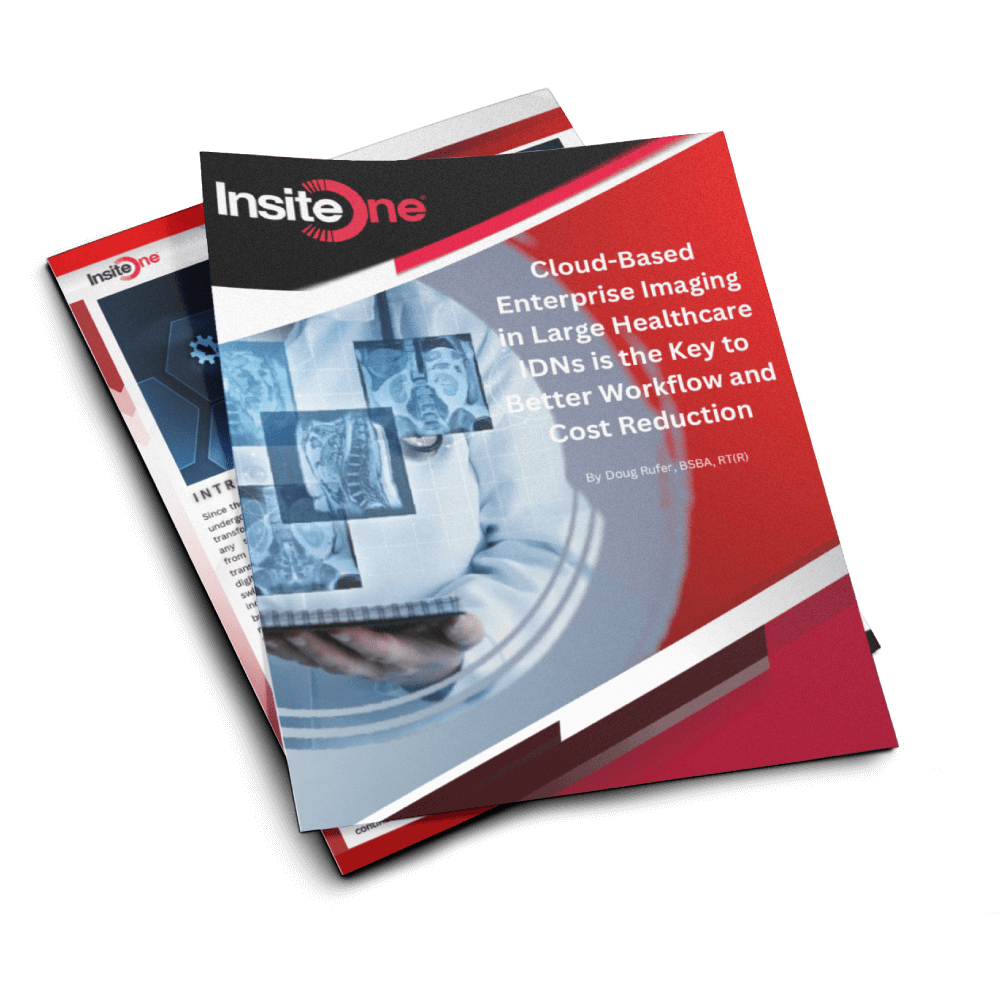Breaking the Chains: Is Vendor Lock-In Holding Back Your Imaging Strategy?

Introduction
In last month’s blog, we explored evaluating if your current PACS is futureproof. This month, we’re helping you break the chains from vendor lock-in by discussing your back-end infrastructure. In today’s data-driven healthcare environment, radiology departments generate unprecedented volumes of imaging data that require sophisticated storage, management, and accessibility solutions, and healthcare organizations increasingly recognize the limitations imposed by proprietary systems. The question often becomes not whether to implement a Vendor Neutral Archive (VNA), but rather how to strategically deploy this technology to maximize operational efficiency, enhance clinical workflows, and reduce total cost of ownership.
Your organization probably has either implemented an older VNA or is planning for one in the future for consolidating back-end infrastructure. Image storage consolidation can reduce costs, improve access to data, and provide a better framework for clinical research. No matter what your strategy is, to reimagine radiology while preparing for the future, a VNA is a critical component on your journey to imaging independence.
The Hidden Cost of Vendor Lock-In
Legacy and proprietary imaging systems present significant challenges that extend far beyond initial implementation costs. Older technology was not designed to meet the flexibility and speed required in today’s fast-paced healthcare environments. Healthcare organizations often find themselves constrained by inflexible architectures that inhibit interoperability, complicate data migration plans, and ultimately compromise the quality of patient care. Systems that stray from recognized industry standards and employ proprietary data formats, customized interfaces, and restrictive licensing agreements effectively prevent seamless integration with third-party solutions. This limits the ability for an organization to rely on legacy solutions to carry them into the future.
The financial implications of vendor lock-in manifest in multiple ways:
- Escalating maintenance fees that increase annually without corresponding improvements in functionality due to the ongoing complexity of managing non-standardized data.
- Costly data migration projects when transitioning between systems, often require specialized expertise. Migration projects where proprietary data is involved are increasingly complex and the resources that understand how to unlock that data to ensure a successful migration are becoming harder to find and more expensive. Add to that the significant amount of time a proprietary data migration can take, and one can see how easy it is for costs to continually escalate during the migration project.
- Limited negotiating leverage when contract renewals approach, as the cost of switching becomes prohibitively expensive due to proprietary migrations. This so-called “lock-in” scenario begins to limit organizations on data freedom, enhanced interoperability, and system modernization decisions.
- Redundant storage infrastructure necessitated by incompatible data formats across departmental silos. Redundant storage increases operational costs, limits cross-team collaboration and necessitates unnecessary maintenance contracts to support many data storage silos.
These are the most apparent vendor lock-in costs that can hold you back. Add limitations for enhanced collaboration and impacts on patient care, and additional, hard to tabulate costs appear as well. Moving to an open, modern data infrastructure will establish a path that provides data independence both today and well into the future.
VNA: The Strategic Foundation for Data Liberation
A robust VNA functions as more than simply another storage repository, it represents a fundamental shift in how healthcare organizations conceptualize data ownership, access, and utilization. By standardizing medical images in vendor-agnostic formats and implementing universal interfaces, VNAs effectively decouple clinical data from the applications that generate them, as well as open organizations up to choosing the best viewers on the market to visualize, analyze, and collaborate among peers on the data requested.
Modern VNA solutions deliver transformative capabilities that directly address the limitations of proprietary systems. A few of the key benefits that a VNA provides included the following:
- Standards-based architecture ensures compatibility with DICOM and non-DICOM data from disparate sources. Additionally, standards such as HL7 for data communication, FHIR for advanced organizational workflows, and API integrations to other 3rd party systems provide the capabilities organizations need today to perform healthcare of the future.
- Unified access protocols that enable authorized users to retrieve images regardless of originating system. This unfettered access provides enhanced patient care since providers can see virtually any data they need without having to chase it down. VNAs easily integrate with an organization’s EHR, allowing visualization of imaging data within context to the patient record. Being able to see any data along with the patient’s clinical record improves cross-team collaboration, and ultimately can provide better patient outcomes.
- Centralized storage management eliminates redundant archives and optimizes infrastructure utilization. Data silos are workflow bottlenecks and having imaging archives for many departments (like dermatology, radiology, cardiology, pathology, ophthalmology, wound care, etc.) increases not only system infrastructure costs but requires more staffing to maintain these systems and far more vendor contracts to manage. Moving all imaging to a centralized, modern VNA can reduce overall infrastructure costs, not to mention the elimination of future data migrations since all imaging data is now stored in a centralized, standards-based archive.
- Sophisticated lifecycle policies that automate data retention, compression, and purging according to clinical requirements. Every organization has unique data retention requirements and having a unified archive system with sophisticated lifecycle management capabilities allows you to control when and where your data will be stored (such as sending images older than 6 years to “deep cloud storage”) that can save you money, as well as improve and comply with complex data retention requirements.
It’s Time to Reimagine Imaging
Healthcare organizations that implement a comprehensive VNA strategy position themselves to fundamentally transform their clinical workflows, operational efficiencies, and technology roadmaps. This transformation extends beyond radiology to impact enterprise-wide imaging initiatives, cross-departmental collaboration, and longitudinal patient records.
What areas of your organization do you believe would be impacted by implementing an enterprise imaging initiative and consolidating all your imaging archives? Below are a few of the areas where you can anticipate a positive impact by not only reimagining radiology…but by reimagining imaging overall.
Operational Benefits
The operational advantages of a VNA implementation include streamlined workflows, reduced administrative overhead, and optimized resource allocation. By consolidating disparate archives into a unified platform, organizations can implement standardized protocols for data management, exchange, security, and accessibility that significantly reduce complexity and maintenance requirements currently in place at your organization. Managing all imaging from an open, centralized data infrastructure improves many operational challenges and can lower overall costs.
Clinical Advantages
From a clinical perspective, VNAs facilitate comprehensive access to patient imaging histories, enabling more informed diagnostic decisions and treatment planning. The ability to view longitudinal imaging data through a single interface enhances clinical efficiency and reduces the likelihood of duplicate examinations, ultimately improving patient outcomes while controlling costs. If your organization is pursuing value-based care initiatives or driving towards The Triple Aim initiative in healthcare (enhance the patient experience, improve population health, and lower costs), a VNA is central to both value-based care and Triple Aim initiatives.
Strategic Flexibility
Perhaps most importantly, VNAs provide healthcare organizations with unprecedented strategic flexibility. When imaging data resides in vendor-neutral formats, organizations can select best-of-breed solutions for visualization, analysis, and reporting without concern for compatibility constraints. This flexibility extends to future technology adoption, allowing organizations to incorporate emerging innovations such as artificial intelligence (AI) algorithms and cloud-based analytics platforms within your VNA platform. The benefit of using a VNA as your backbone for adopting new technologies like AI is significant. Your AI strategy can be adopted across all aspects of your organization and managed from a centralized infrastructure, further improving your ROI with AI and extending it outside of radiology.
Implementation Considerations: Beyond the Technology
Successful VNA implementation requires careful consideration of organizational factors beyond technical specifications. Key stakeholders from radiology, IT, administration, and clinical departments must collaborate to define objectives, establish governance frameworks, and develop comprehensive migration strategies. Whenever you embark on a new approach to any initiative, not only do you need to define the key strategic outcomes you expect to achieve, but also roadmap where you want to start with your journey and what outcomes do you expect to hit by end of year one, three, five, and beyond. This provides a blueprint how you will implement and phase your enterprise initiative while identifying other opportunities to enhance along the way.
Critical success factors that require attention and consideration include:
- Comprehensive data migration planning that addresses historical archives and ongoing acquisitions. Map out all systems you are consolidating to your VNA and provide detailed analysis and plans for how and what data you will migrate.
- Clear governance policies that define data ownership, access controls, and lifecycle management. To learn more about areas of data governance to analyze, see the HIMSS whitepaper written by Doug Rufer entitled Predictive Medicine: Advancing Healthcare Through Better Data Governance.
- Strategic interoperability design that optimizes connections with existing and future clinical systems. Be sure to address things like API integrations, the use of FHIR workflows, and standard HL7 data flows between clinical systems.Robust security frameworks that ensure compliance with regulatory requirements while facilitating appropriate access. Be sure to learn more about how to keep your data safe by checking out our previous blogs on data protection and disaster recovery.
Conclusion: Building Imaging of the Future
As healthcare organizations continue their digital transformation journeys, the strategic importance of vendor-neutral data management becomes increasingly apparent. By implementing a comprehensive VNA solution, data governance strategy, and overall data access and security blueprint, organizations can break free from the constraints of vendor lock-in. They also establish a foundation for current and future data interoperability and position themselves to leverage emerging technologies that enhance diagnostic and workflow capabilities while improving and advancing patient care.
The path forward requires thoughtful planning, stakeholder alignment and engagement, and an organizational commitment to establishing sound data standards. Organizations that successfully navigate this transition will realize significant benefits in terms of operational efficiency, clinical effectiveness, and strategic flexibility—ultimately reimagining imaging in their enterprise as an integrated component of a cohesive healthcare delivery ecosystem rather than an isolated department constrained by proprietary technologies and outdated workflow challenges.
For more information on how InsiteOne can provide a tailored solution to meet your organization’s Enterprise Image Archiving needs, contact us today at 866.467.4831or visit us here.




